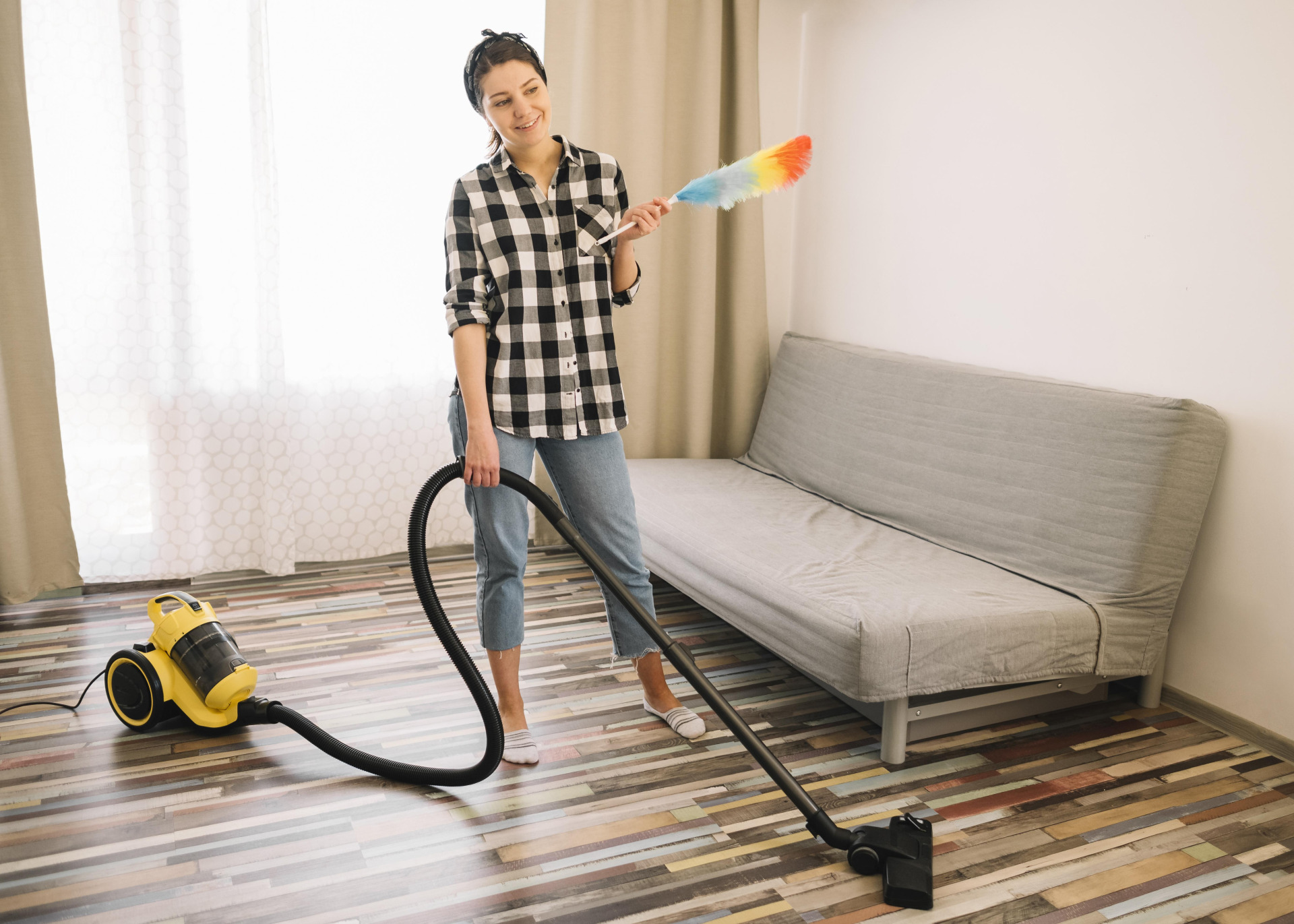Mold growth can be a source of great stress for homeowners due to the potential damage it may cause and possible health issues. In order to keep your home safe and healthy, we will provide you with some tips on how best to quickly remove mold while also preventing its return in the future. Through proper cleaning processes which utilize suitable products, all traces of mold can effectively disappear so that everyone living in your household is able to enjoy clean air without any risk or worry.
Short Summary
- Identify the type and location of mold in your home to safely remove it.
- Use natural or chemical solutions for effective cleaning, taking safety precautions when necessary.
- Improve ventilation and moisture control to prevent future growth.
Identifying Mold Types and Locations

Recognizing the type of mold that has grown in your home is important before you try and eliminate it. Its location can help decide what measures to take for its successful removal, as some kinds are more damaging than others due to high levels of moisture or humidity present there. Let’s examine the common molds prevalent and where they usually breed. Understanding these details will be essential when dealing with any sort of mold growth problem.
Common Mold Types
Different types of mold often grow in your home, including black, white, blue and even green mold. Black can be found particularly when there is a high level of moisture damage. While the common sight for white mold could usually occur in cool/damp areas such as basements, which may lead to confusion with efflorescence at times. Blue spores tend to sprout on damp surfaces like walls or ceilings within bathrooms. While you might find an abundance of green around moist spots like shower enclosures or humid corners. It’s important to identify what type it is since each requires different cleaning methods accordingly, so making sure these distinctions are known should be part of any homeowner’s routine!
Mold-Prone Areas
Mold growth is an issue that can be quite common in areas of high moisture, such as bathrooms, kitchens, laundry rooms and bedrooms. Humidity levels and water infiltration may also lead to mold development in these particular locations. In the bathroom, for instance, shower tiles and other tile grout also are prone due to frequent exposure with humidity. Knowing where problem spots might exist could help you deal with any potential mold issues ahead of time before they become more serious problems later on down the road. Keeping an eye out for those kinds of places will make sure your home stays free from harmful toxins associated with mold growth!
Effective Mold Cleaning Solutions

Mold removal solutions can be divided into two types: natural and chemical. Natural remedies, such as vinegar, hydrogen peroxide or baking soda, are more environment-friendly options that can prove effective in cleaning mold from different surfaces while harsher chemicals like bleach or pre-made commercial products might have a stronger effect but may also lead to health complications when not properly handled.
Let us explore. These methods for removing the fungus growth and how they should best be used accordingly. First of all, with regards to natural remedies – items including hydrogen peroxide and baking soda could do wonders if applied correctly on affected areas – destroying mold without having side effects on people’s wellbeing at risk since those alternatives don’t comprise any hazardous elements able of causing harm. It is important to keep an eye out due to their moderate potency which will require frequent applications until full success against the spread has been achieved. When it comes down to chemical choices though, one must exercise caution while handling them because significant damage might occur unless safety measures established by manufacturers have previously been observed properly first off prior usage. Otherwise its effectiveness would become moot inevitably so proceed carefully hereon otherwise results desired won’t appear anytime soon enough unfortunately either way possible along term outcome potentially lasting longfrom amaybeobserved result.
Natural Solutions
Homeowners who prefer an eco-friendly, gentle approach to eradicating mold often turn to natural solutions. Combining distilled white vinegar and hydrogen peroxide in equal parts creates a potent cleaning solution that should be applied directly onto the affected area and left on for 10 minutes before wiping it away with a cloth. Baking soda can also be used as well: when combined with water, this mixture is great at scrubbing off any growth of mould. Make sure you rinse the space thoroughly then allow it all time to dry completely.
Chemical Solutions
For larger mold infestations or areas surface mold that are more difficult to get rid of, chemical solutions such as bleach and commercially available removers may be needed. Non-porous surfaces like porcelain bathtubs and tiles can successfully have mold removed with a mix made from one cup of bleach mixed with sixteen cups (one gallon) of water. Make sure the combination is thoroughly stirred before use.
When applying the solution to the affected area, scrub it down then rinse away all traces. But be careful – discoloration could occur when utilizing this method while other materials may not react well either so exercise caution always.
Never combine ammonia or any cleaner which contains said gas in conjunction with bleaching agents because hazardous fumes will result if done so. Add hazards to an already delicate job.
Step-by-Step Guide to Removing Mold From Various Surfaces

Now that you have a selection of mold cleaning solutions at your disposal, it’s time to understand how to get rid of this unsightly substance on several surfaces in the house. The process may differ based on what material we are dealing with, so knowing exactly which steps should be followed is essential.
We will provide comprehensive instructions for removing mold from walls and ceilings, fabrics and wood throughout this article. So if you need help getting rid of mold spots the fungus-like growths around your home or belongings, now you know where to look!
Walls and Ceilings
Mold growth can cause both an eyesore and a potentially hazardous environment. To eradicate it, survey the affected wall or ceiling and decide the severity of contamination first. Covering interior walls and any furniture beneath with plastic cloths using painter’s tape is necessary to keep them from being contaminated as well.
When removing moldy areas, use either bleach/water solution or commercial cleaning products on the area that needs attention. Make sure to clean vigorously before rinsing thoroughly with pure water for drying completely afterwords. Finally, paint over stained areas in order to avoid future issues related to mold presence in your house such as mildew development problems etc.
Fabrics
It is difficult to eliminate mold on fabrics. Immediate action may help preserve your precious clothes or bedding from being spoiled. So as to stop the spores of the fungus spreading, it is advised that you take all affected items out of your house at once.
For those pieces that can be thrown into a washing machine. Simply utilize detergent and fabric bleach for cleaning purposes in order to eradicate any trace of mold. On the other hand, if this solution cannot work because they are either too delicate or large, then go straight ahead with taking them over to a professional dry cleaner who will have specialized knowledge necessary for proper eradication of mould particles present within garments.
Wood
Wooden surfaces can be easily damaged by mold growth due to their porous nature. To eradicate the presence of mold stains it, begin with vacuuming all spores from the area and then use a soapy solution with a sponge to scrub vigorously at the affected surface. After that is complete, rinse away any suds before wiping down fully with a clean cloth in order for no moisture lingers on its own afterward. If this does not solve your mold problem permanently, getting professional help may be advisable or necessary.
Safety Precautions and Protective Measures

Safety should always be a top priority when dealing with mold infestations, especially if the problem is large or involves toxic molds. When tackling mold removal tasks, it’s essential to take precautionary measures and wear proper protective equipment (PPE).
In this section we will discuss why PPE is important, how to avoid creating airborne spores from affected areas and ways of increasing ventilation while containing the contaminated space within your home. Mold control must include steps that prevent mold growth. Spreading of any existing spores as well as their creation in order for clean-up efforts to be successful.
Personal Protective Equipment
To reduce the risk of contact with mold spores, it is important to take safety precautions when removing mold from your home. This includes wearing items that can be disposed of. Such as old clothing and also protective eyewear, a face mask and rubber gloves while handling chemicals or coming into direct contact with visible mold growths. By doing this not only are you protecting yourself but halting any potential spread within other areas in the house.
Ventilation
When it comes to mold removal, good ventilation is essential. Open windows and place fans to help air circulate more efficiently throughout the area during this process. Use bathroom and kitchen exhaust systems when dealing with these types of spaces for a greater impact on moisture control as well as odors in the environment. Keeping proper airflow not only improves your safety while handling mold, but also keeps future infestations at bay. To summarize: ventilating correctly helps disperse both cleaning fumes and spores from mold, which prevents growth moving forward.
Preventing Future Mold Growth

Maintaining a mold-free home involves more than just cleaning up existing growth, but rather preventative measures. To that end, controlling dampness and fixing leaks should be addressed to reduce future occurrences of the fungus. Proper ventilation paired with use of mildew-resistant paint is essential in keeping mold from taking hold once again. Removing it may have been half the battle initially. Staying vigilant for signs after can make all the difference in preventing the disease. Spread or need for removal efforts later on.
Moisture Control
To stave off mold, dampness is the most critical factor to consider. Inspect your property for any holes or cracks in the plumbing, roofing and window seals that could let water seep inside. Utilize a dehumidifier, air conditioner and ventilation fan to keep humidity levels at no more than 60%. This will help control moisture issues while also cutting down on potential instances of fungal growth in homes. In this way you can drastically reduce the chances of dealing with unwanted mold development within your household surroundings.
Ventilation and Air Circulation
Good ventilation and air flow play an integral part in averting the proliferation of mold by eliminating spores, along with other airborne contaminants. To ensure improved airflow throughout your house, you can leave windows open or employ a box fan to be on the safe air dry side as well as ceiling fans and use HVAC systems if available.
To make sure that moisture does not lead to mold infestation when showering cooking or cleaning, it is advised to run bathroom/kitchen exhausts for at least 15 minutes following which will properly take out smells warm water & humidity from the atmosphere.
When to Call a Professional Mold Removal Service

Mold can become a major issue, and while some situations may require only basic cleaning with elbow grease and the right products to get rid of it, if more than 10 square feet is affected or special chemicals are necessary for removal then calling in an expert for mold remediation service could be your best bet.
The professionals will assess the area where growth has taken place, determine its cause, offer advice on how to avoid any recurrences in the future as well as providing details about what treatment would work most effectively.
Summary
Taking appropriate steps to combat mold growth and prevent future infestations is important for protecting your home’s environment. Through identifying the type, location and selecting a suitable cleaning solution, you can quickly handle any issues arising from mold in an effective manner while also taking necessary safety measures. By addressing potential problems promptly this way, one can ensure a healthy living space free of unwanted mould.
Frequently Asked Questions
Is bleach or vinegar better to kill mold?
Using vinegar is the optimal way to remove mold, according to studies and experienced opinions. It has the ability to reach deeper levels of porous materials than bleach, which can only target mold spores on top layers wall surfaces.
It’s safer for people as well as more eco-friendly so that makes it a preferred choice when compared with chlorine bleach, in regards to eliminating mildew growths.
What is the best thing to clean mold with?
For hard surfaces, a mixture of bleach and water or straight white vinegar is ideal for tackling a moldy surface. On fabrics, as well as bathroom fixtures, walls and kitchen appliances, hydrogen peroxide can be used to clean away unwanted growths. To keep your home free from moldy spots, it’s important to use these solutions effectively on all materials present in your household.
Can I clean mold myself?
If you wish to clean mold yourself, it is recommended that professional help be obtained. As sometimes the growth of the mold might have spread into areas which can’t easily be reached. It’s essential to take note that incorrect cleaning can cause more harm and jeopardize health safety. Consequently, seeking expert assistance may save time and prevent any future problems. Damage from occurring due to negligence in cleaning effectively.
Is it safe to clean black mold yourself?
Due to the hazardous nature of black mold and associated health risks, it is recommended to get professional help if you want your patch cleaned. Safety measures are a must in order for any potential issues related to the substance not to occur. As far as small patches go, cleaning them on your own is possible. Yet precautionary steps should be taken into account.
How to get rid of mold?
In order to prevent future mold growth and get rid of existing mold, mix a solution composed of one cup bleach and 1 gallon water. Spray the affected area with this mixture then wait for 15 minutes before scrubbing off any remaining mold. Subsequently rinse the area thoroughly using cold water followed by drying it completely. This way you can ensure that no mold appears and no one gets hurt. Problems arise due to extensive amount of unwanted mould in your property.







